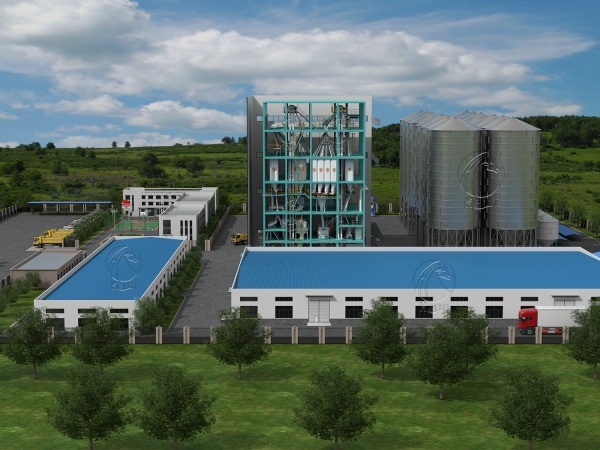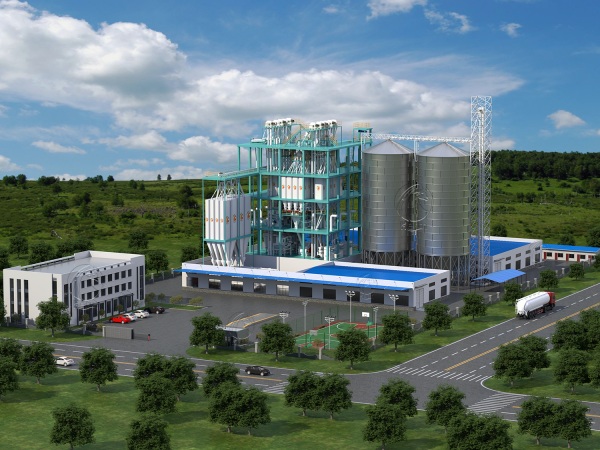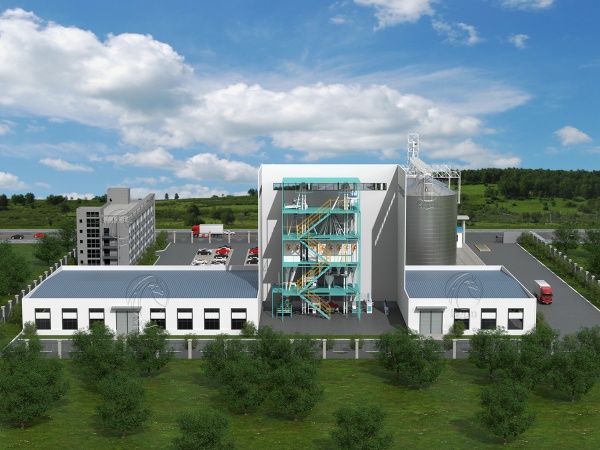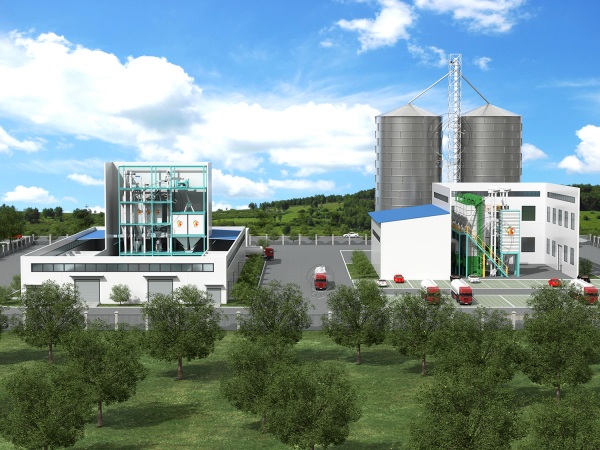Starting a Cattle Feed Making Factory in Ethiopia: A Comprehensive Guide
I. Introduction
The cattle feed industry in Ethiopia is crucial for the agricultural economy, which relies heavily on livestock farming. With one of Africa's largest livestock populations, cattle provide essential income and food security. As demand for meat and dairy products grows, the need for high-quality cattle feed becomes increasingly important, enhancing livestock health and productivity.
Cattle feed includes grains, concentrates, and supplements designed for different growth stages. However, challenges like inconsistent feed quality and limited raw materials persist. A robust cattle feed manufacturing system is essential to address these issues.
This article is a guide for entrepreneurs looking to start a cattle feed manufacturing factory in Ethiopia, covering market analysis, legal requirements, business planning, and production processes. Our goal is to support the development of a sustainable livestock sector, boosting food security and economic growth in the nation.

II. Market Analysis
A. Current Demand for Cattle Feed in Ethiopia
The demand for cattle feed in Ethiopia is increasing due to population growth and urbanization, leading to higher meat and dairy consumption. Farmers recognize the need for high-quality feed to boost productivity and cattle health, supported by government policies focusing on livestock development. This growing demand for specialized feed formulations presents opportunities for new entrants in the market. (Related: Current Trends and Challenges in Feed Production in Ethiopia)
B. Key Players in the Cattle Feed Market
The Ethiopian cattle feed market includes large-scale producers, cooperatives, and small manufacturers. Local companies often partner with international firms to provide tailored feed products. Agricultural cooperatives enhance access to quality feed through collective purchasing, fostering a competitive landscape that prioritizes innovation and quality assurance.
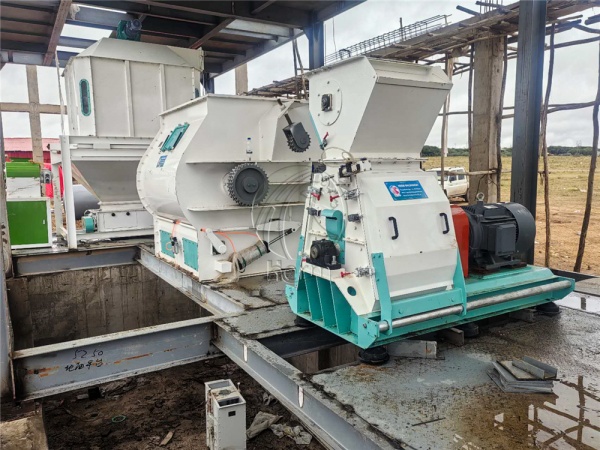
C. Potential Growth Opportunities
The industry offers several growth opportunities:
Specialized Feed Products: Developing fortified feed for specific livestock needs.
Export Potential: Meeting international quality standards to expand into export markets.
Technological Integration: Using precision feeding and formulation software to improve efficiency.
Research and Development: Investing in local ingredients and alternative sources to reduce import reliance.
D. Challenges in the Industry
Key challenges include:
Competition: Intense rivalry can lead to price wars and reduced margins for smaller producers.
Sourcing Quality Ingredients: Fluctuating raw material availability and prices impact production.
Infrastructure Issues: Inadequate transportation and storage facilities hinder distribution.
Farmer Knowledge Gaps: Limited understanding of feeding practices restricts growth.
Addressing these challenges through collaboration, government support, and infrastructure investment can unlock the potential of the cattle feed industry and contribute to Ethiopia's agricultural development.
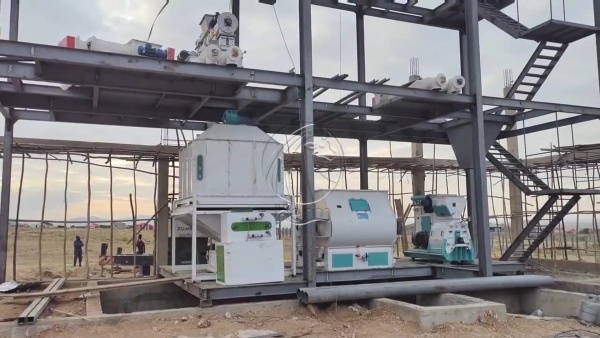
III. Legal Requirements and Regulations
A. Necessary Permits and Licenses
Starting a cattle feed manufacturing factory in Ethiopia requires various permits and licenses. First, register the business with the Ministry of Trade and Industry, applying with a business plan and proof of capital.
Next, an operating license from the local government, which varies by region, must be obtained. Specific food production permits, involving health and safety inspections, may also be needed.
Consider zoning regulations to ensure the site is designated for industrial use. Consulting legal experts can help navigate the permit process and avoid fines or closure.
B. Compliance with Food Safety and Quality Standards
Food safety and quality are essential in the cattle feed industry. The Ethiopian Food and Drug Authority (EFDA) regulates these standards.
Manufacturers must ensure all ingredients are safe and documented, conducting regular tests for nutritional content and contaminants. Pursuing quality certifications can enhance trust and open export opportunities, while compliance with international standards like ISO or HACCP demonstrates a commitment to safety. (Related: How to Start a Feed Production Plant in Ethiopia)
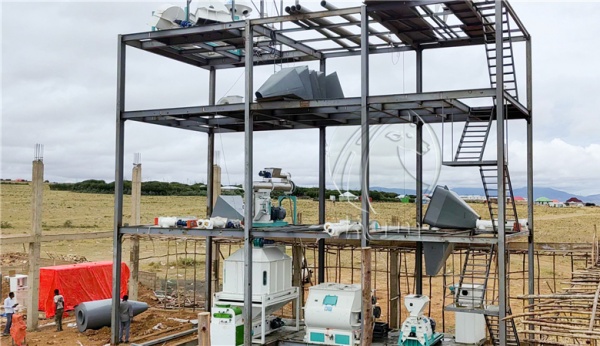
C. Environmental Regulations
Environmental regulations aim to minimize industrial impact and promote sustainability. Compliance with the Environmental Protection Authority (EPA) may require an Environmental Impact Assessment (EIA) before operations begin.
Proper waste management, including safe disposal of by-products, is crucial. Manufacturers should adopt eco-friendly practices like recycling and using energy-efficient equipment.
Maintaining a clean environment supports employee health and aligns with regulations. Following these guidelines helps avoid legal issues and fosters sustainable practices beneficial to the community and environment.

IV. Business Planning
A. Creating a Business Plan
A well-structured business plan is essential for launching a cattle feed manufacturing factory in Ethiopia. It serves as a roadmap, outlining objectives, strategies, and financial projections.
Mission and Vision The mission statement should define the business's core purpose, such as "to produce high-quality, nutritious cattle feed that enhances livestock productivity and supports sustainable farming in Ethiopia." The vision statement should focus on long-term goals, like becoming a leading cattle feed supplier or contributing to food security.
Target Market Identifying the target market is crucial for tailoring marketing strategies. Primary customers may include smallholder farmers, commercial livestock farms, agricultural cooperatives, and export markets. Understanding their demographics and needs will help craft effective sales strategies.
Product Offerings The product range should be based on market research and cattle nutritional needs. Offerings may include:
Standard cattle feed formulations
Specialized feeds for dairy cows, beef cattle, or young stock
Supplementary feeds (minerals and vitamins)
Customized feed solutions
Clearly defining product offerings aids in inventory management and marketing.
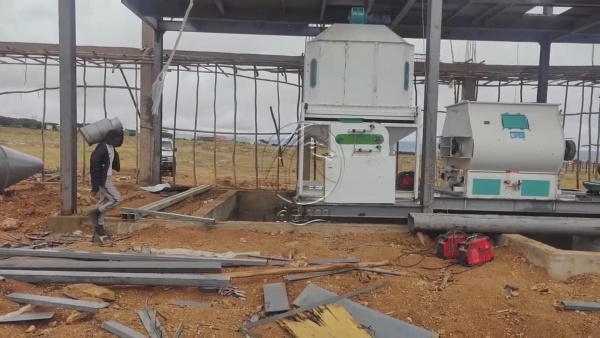
B. Financial Planning
Financial planning is vital for a successful cattle feed business, involving cost estimation, funding source identification, and profitability analysis.
Start-up Costs Key start-up expenses may include:
Facility costs: Rent or purchase, renovation, utilities
Equipment: Feed mixers, pellet mills, drying equipment
Raw materials: Initial inventory for production
Labor costs: Staff wages and training
Licensing and permits: Registration and compliance fees
A detailed breakdown aids in budgeting.
Funding Options Various funding sources include:
Loans: Traditional bank loans or microfinance for agriculture.
Grants: Government and international organizations may offer grants for agricultural development.
Investors: Attracting private investors or venture capitalists interested in agriculture.
Exploring multiple avenues increases the chances of securing financial support.
Profitability Analysis A profitability analysis is crucial for assessing financial viability, including:
Revenue projections: Estimating sales based on market demand and pricing strategy.
Cost analysis: Evaluating fixed and variable production costs.
Break-even analysis: Determining when total revenue equals total costs, indicating profit onset.
By analyzing these factors, entrepreneurs can make informed decisions on pricing and operations, ensuring long-term profitability in the cattle feed industry.
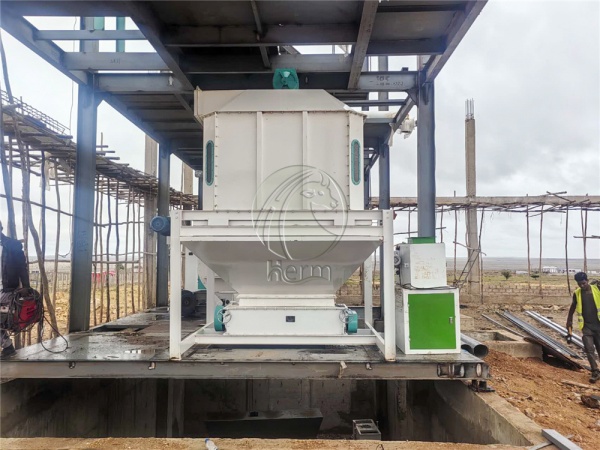
V. Location and Infrastructure
A. Selecting an Appropriate Location
Choosing the right location for a cattle feed manufacturing factory is crucial for operational efficiency and success.
Proximity to Suppliers and Markets The ideal site should be near raw material suppliers to minimize transportation costs and ensure a steady supply of ingredients. Being close to agricultural regions enhances market access for quicker distribution to livestock farms, cooperatives, and retailers. A high concentration of potential customers reduces delivery times and logistics costs.
Accessibility and Logistics The location should have excellent road access and transportation infrastructure. Proximity to major highways, railroads, or ports improves logistical efficiency and lowers expenses. Assessing local traffic conditions is essential to avoid bottlenecks, while the availability of utilities like electricity and water is vital for smooth operations.
B. Facility Requirements
The design and layout of the facility are key to an efficient production process.
Production Area The production area must be spacious enough for necessary equipment and efficient workflow. Key considerations include:
Equipment placement: Strategically position mixers, pellet mills, and dryers for optimal efficiency.
Safety and hygiene: Implement protocols to maintain cleanliness and comply with health regulations.
Ventilation and climate control: Ensure adequate ventilation for air quality and temperature maintenance.
Storage Space Ample storage is essential for raw materials and finished products:
Raw material storage: Designate a cool, dry area protected from pests, with inventory management systems in place.
Finished product storage: Allocate organized space for packaged products, facilitating easy access and dispatch.
Office Space An office area is necessary for administrative functions, and is equipped with:
Workstations: Desks and equipment for administrative, sales, and customer service staff.
Meeting rooms: Spaces for team meetings and discussions with suppliers and customers.
Break areas: Designated spots for staff breaks to enhance well-being and productivity.
By carefully selecting a location and designing an effective facility, entrepreneurs can establish a strong foundation for their cattle feed manufacturing business, enhancing efficiency and supporting growth in the competitive agricultural market.
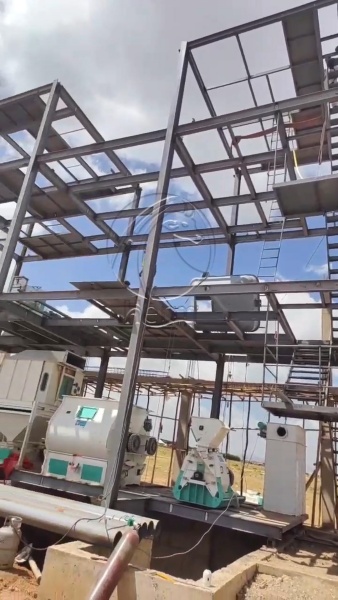
VI. Equipment and Technology
A. Types of Equipment Needed for Cattle Feed Production
Establishing an efficient cattle feed manufacturing operation requires several key pieces of equipment, each contributing to the quality and consistency of the final product.
Feed Mixers Feed mixers blend various raw materials into a homogeneous mixture, ensuring even nutrient distribution. Key considerations include:
Capacity: Should meet production demands for the scale of operation.
Type: Common types include horizontal and vertical mixers, each with different mixing speeds and efficiencies.
Pellet Mills Pellet mills compress the feed mixture into pellets, improving consumption and digestion for livestock. Important factors include:
Capacity and throughput: Must produce the required quantity of pellets per hour.
Die size and thickness: Affects pellet size and hardness, impacting digestibility.
Dryers Dryers reduce moisture content in feed pellets, preventing spoilage and ensuring a long shelf life. Key considerations include:
Type of dryer: Options like batch and continuous dryers offer different efficiencies.
Energy efficiency: Selecting energy-efficient equipment can significantly lower operational costs.
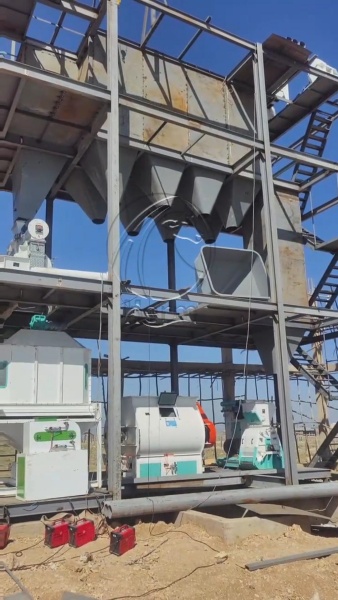
B. Importance of Quality Machinery for Efficiency
Investing in high-quality machinery is essential for operational efficiency and maintaining product quality. Reasons include:
Consistency in Production: Reliable machinery ensures consistent pellet size, shape, and nutritional content, meeting customer expectations and regulatory standards.
Reduced Downtime: Quality equipment requires less frequent repairs, maximizing output and enabling manufacturers to meet market demand without interruptions.
Improved Energy Efficiency: Advanced machinery often uses energy-efficient technologies, reducing operational costs and supporting sustainable practices.
Enhanced Safety and Compliance: Quality equipment includes safety features that protect operators and ensure regulatory compliance, creating a safer working environment.
Long-term Cost Savings: Though the initial investment may be higher, long-term savings from reduced maintenance, increased productivity, and better product quality can outweigh these costs.
By selecting and investing in the right equipment and technology, entrepreneurs can establish a cattle feed manufacturing business that operates efficiently and produces high-quality products, meeting market demands.
VII. Sourcing Raw Materials
A. Identifying Suppliers for Key Ingredients
Sourcing high-quality raw materials is essential for nutritious cattle feed. Key ingredients include grains (maize, barley, wheat), protein sources (soybean meal, fish meal), minerals, vitamins, and additives.
Local Suppliers Building relationships with local farmers and agricultural cooperatives ensures fresher ingredients and supports the local economy. Suppliers who understand livestock nutritional needs can enhance feed quality.
Regional Suppliers If local sources are insufficient, consider suppliers from nearby regions or countries for greater variety and backup options in case of disruptions.
Evaluating Suppliers Conduct due diligence by assessing suppliers' production practices, reliability, and their ability to meet quantity and quality requirements consistently.
B. Strategies for Securing Reliable and Cost-Effective Sources
Long-term Contracts Negotiating long-term contracts provides price stability and ensures a consistent supply, reducing the risk of price fluctuations.
Bulk Purchasing Buying ingredients in bulk can lead to cost savings but requires careful inventory management to prevent spoilage.
Diversification of Suppliers Having multiple suppliers for each ingredient mitigates risks associated with supply chain disruptions, ensuring alternatives are available.
Building Relationships Strong relationships with suppliers foster trust, leading to better negotiation terms, priority during shortages, and potential discounts.
C. Importance of Quality Control in Raw Materials
Implementing a quality control system for raw materials ensures the safety and effectiveness of the final feed products.
Testing for Contaminants Regular testing for contaminants (mold, pesticides, mycotoxins) is crucial for livestock safety. Partnering with certified laboratories can facilitate this process.
Monitoring Nutritional Content Analyzing nutritional content ensures formulations meet the dietary needs of different cattle types, involving routine testing and audits of suppliers.
Traceability A traceability system allows for tracking the origin of raw materials, essential for quality assurance and compliance with food safety regulations, and for building trust with customers.
VIII. Marketing and Sales Strategy
A.Identifying Target Customers
Farmers Smallholder and commercial farmers are the primary customers, needing various feed types for different livestock.
Agricultural Cooperatives Collaborating with cooperatives can expand market reach and enable bulk purchasing opportunities.
Livestock Producers Large-scale livestock producers requiring consistent quality feed represent a significant market segment.
B. Developing a Marketing Plan
Branding Creating a strong brand identity focused on quality, reliability, and local sourcing can differentiate the business.
Distribution Channels Identifying effective distribution methods—such as direct sales, partnerships with agricultural suppliers, and online sales—is crucial for reaching customers.
Promotional Strategies Utilizing promotional strategies like agricultural fairs, trade shows, and social media marketing can boost visibility and attract customers.
Building Relationships with Customers and Stakeholders
Customer Feedback Encouraging feedback helps refine product offerings and improve service.
Networking Building relationships with local agricultural organizations and industry associations can create new business opportunities.
Educational Initiatives Providing resources on best livestock feeding practices establishes the company as a trusted industry authority.
IX. Conclusion
Starting a cattle feed factory in Ethiopia requires key steps like sourcing raw materials, selecting equipment, and developing a marketing strategy. A structured approach will help aspiring entrepreneurs navigate this complex industry.
Encouragement for Entrepreneurs
The cattle feed industry presents ample opportunities for growth and innovation. With effective planning, entrepreneurs can enhance livestock productivity and contribute to agricultural development.
Future Outlook
As demand for quality livestock feed increases, the future of Ethiopia's cattle feed industry looks promising. By utilizing local resources and modern production practices, businesses can succeed in this dynamic market.
Henan Herm Machinery Co., Ltd was established in 2010 and has been devoted to the research and development of Feed Mill Machinery ever since. With more than 10 years of experience, Herm® has become a leading manufacturer and supplier of animal feed machines and complete animal feed production lines, cattle feed plants, poultry feed plants, animal feed pellet production lines, etc. It always endeavored to improve the quality of products and aims to meet the new requirements of the international market.
If You Are Ready to Start a Feed Pellet Plant Business, please contact us for the feed mill machine. We Can Provide Professional Design and Comprehensive Guidance According to Your Needs. Get in touch with us now!
Welcome Contact Us!
Henan Herm Machinery Co., Ltd
Email: info@hermmachinery.com
Whatsapp: 0086 18037508651


